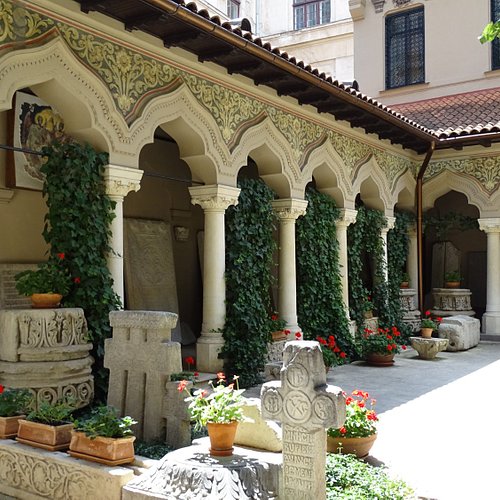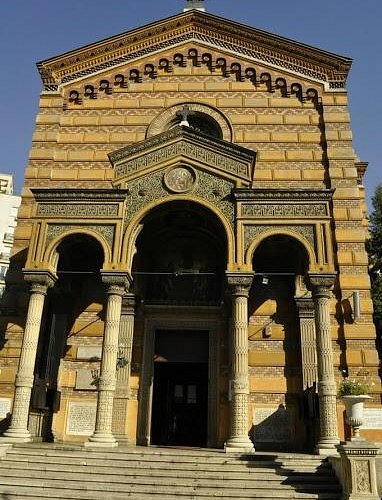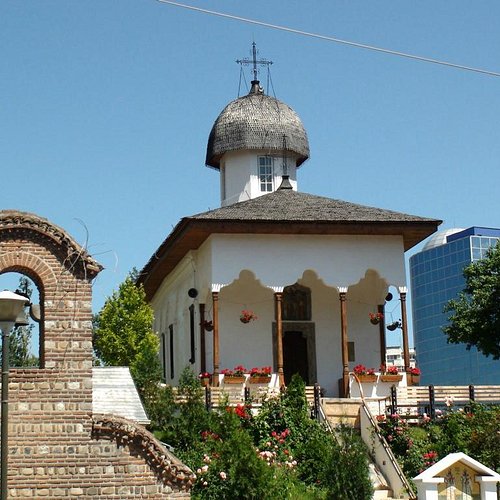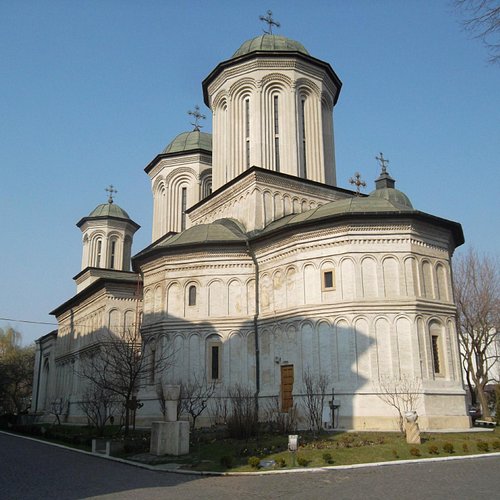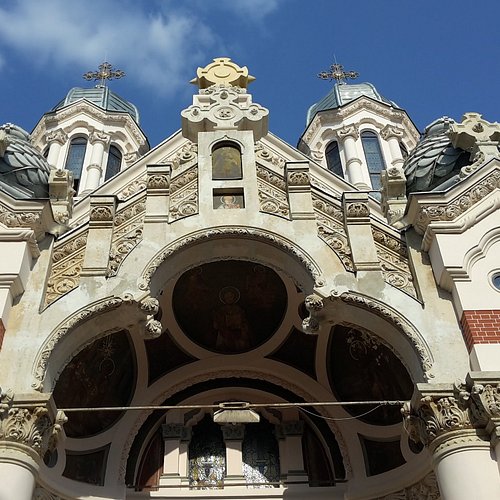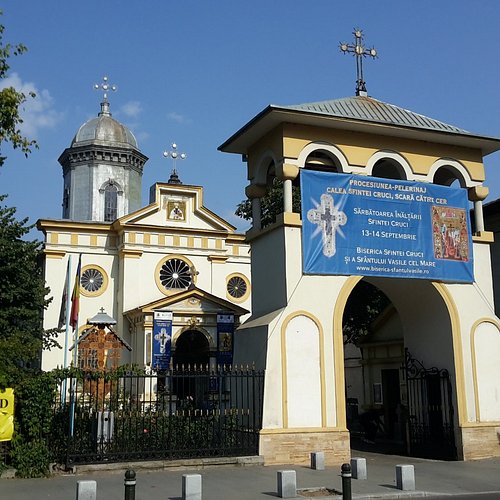10 Churches & Cathedrals in Bucharest That You Shouldn't Miss
Vlad the Impaler stated his claim to Bucharest in 1459. His citadel on the Dambovita was the first of flotillas of palaces, many of which still stand. Four subway lines and a modern bus network transport visitors and commuters. Nicknamed "Little Paris", Bucharest's elegant early 20th-century architecture shows French influences. Don't miss the Village Museum, Romanian Athenaeum and the Peasant Museum. You can't miss the Palace of Parliament, the second-largest building in the world (after the Pentagon).
Restaurants in Bucharest
1. Stavropoleos Monastery
Overall Ratings
4.5 based on 2,759 reviews
Built in 1724, this beautiful church is one of Bucharest's oldest.
Reviewed By sakisb_72 - Athens, Greece
A wonderful church,a monument rich of history and culture with amazing wall paintings! A must see when in Bucharest!
2. Biserica Sfantul Gheorghe Nou
Overall Ratings
4.5 based on 135 reviews
Reviewed By permia
It's a beautiful church. I would think the moniker of New is relative, given that it was sanctified in 1707. Designed by an Italian, the glorious frescoes were created by the greatest of Romanian artists. It has undergone a recent renovation bringing the original lustre to the fore. A lovely facade with columns and holy images welcomes the faithful. An imposing statue of Constantin Brâncoveanu, the Wallachian Prince who was executed by the Ottomans, fronts the church. Vibrant are the assemblage of breathtaking frescoes inside. The vista from the rear towards the iconastasis is awe-inspiring. The domes are wondrously embellished with holy scenes. The Christ Pantocrator is central in one.
3. Patriarchal Cathedral( Catedrala Patriarhala)
Overall Ratings
4.5 based on 460 reviews
Reviewed By PopisteanuG - Bucharest, Romania
the head office of the Romanian Orthodox Church, including the head office itself, a church with a 350 years history and a palace erased to the beginning of the 20th century the palace has a great importance for Romanians, a lot of relevant historical moments happened inside, or on that location actually, on this location has been born Romania as state (the Little Union of the Romanian Principalities, 1859) during the communist regime, the Patriarchy Palace hosted the Parliament, you could imagine the sacred and the profane (the church and the palace) separated by only a few meters - the communists declared themselves as atheists, also they destroyed a lot of churches and more dangerous, a lot of souls the church hosts remains of the saint which protects the city, the pilgrimages its quite impressive to the end of each October, to his anniversary try to fell the spirituality of the place
4. Lady Balasa Church
5. Biserica Bucur
Overall Ratings
4.5 based on 30 reviews
Reviewed By victor545 - Bucharest, Romania
A very significant piece of Orthodox Romanian Christianity. Even if it was not built in 1416 (Bucharest is firstly mentioned in a document in 1459), its only fresco still preserved - a small fragment just above the entry, probably painted in the XVIIIth century - is precious and evocative. There are no other paintings, inside or outside, but there are a lot of icons, of very unequal artistic value, but who cares? If you visit this church, you understand the Romanian Christianity better than studying 100 books. The priest, young, charming and hospitable, is very appropriate for this place.
6. Manastirea Antim
Overall Ratings
4.5 based on 68 reviews
Very near the Parliament Palace on Bucharests Unirii Boulevard is the Antim Monastery, one of the most beautiful monasteries in the city.
Reviewed By Vladimiramirela - Mississauga, Canada
I have seen with my own eyes, many years ago, when this entire buildingg was being transported on heavy supports, along masive rails, at the speed of approximately 10 meters/hour. It is amazing how Antim Monastery - as other few churches in Bucharest, as well - survived those times when the Communist regime desired to wipe off all traces of religion and history before their time.
7. Radu Voda Monastery (Manastirea Radu Voda)
Overall Ratings
4.5 based on 52 reviews
Reviewed By Bogdan2005 - Bucharest, Romania
This is one of the oldest Orthodox Monasteries in Bucharest and a beautiful example of Romanian Christian arhitecture. Located on a small hill in the back of a line of block of flats, it is a real miracle this monasteries survived the communist destruction period. Nice arhitecture lines, beautiful paintings and light. It also hosts the tomp of a former Romanian Patriarch (Justinian Marina). It is really worth a visit.
8. Anglican Church of the Resurrection
Overall Ratings
4.5 based on 6 reviews
Reviewed By donnison44 - Grantham, United Kingdom
We arrived for Holy Communion and were warmly welcomed. There was a good choir and a good sermon as well as hymns. Afterwards coffee and biscuits were served, - donation only and everyone was very friendly. The building itself is constructed of brick with plain white walls inside and is clean and tidy. The history is fascinating as Queen Marie of Romania regularly worshipped here and was granddaughter to Queen Victoria. During the communist regime the chaplain was constantly harassed but continued on with the "cross held high".

